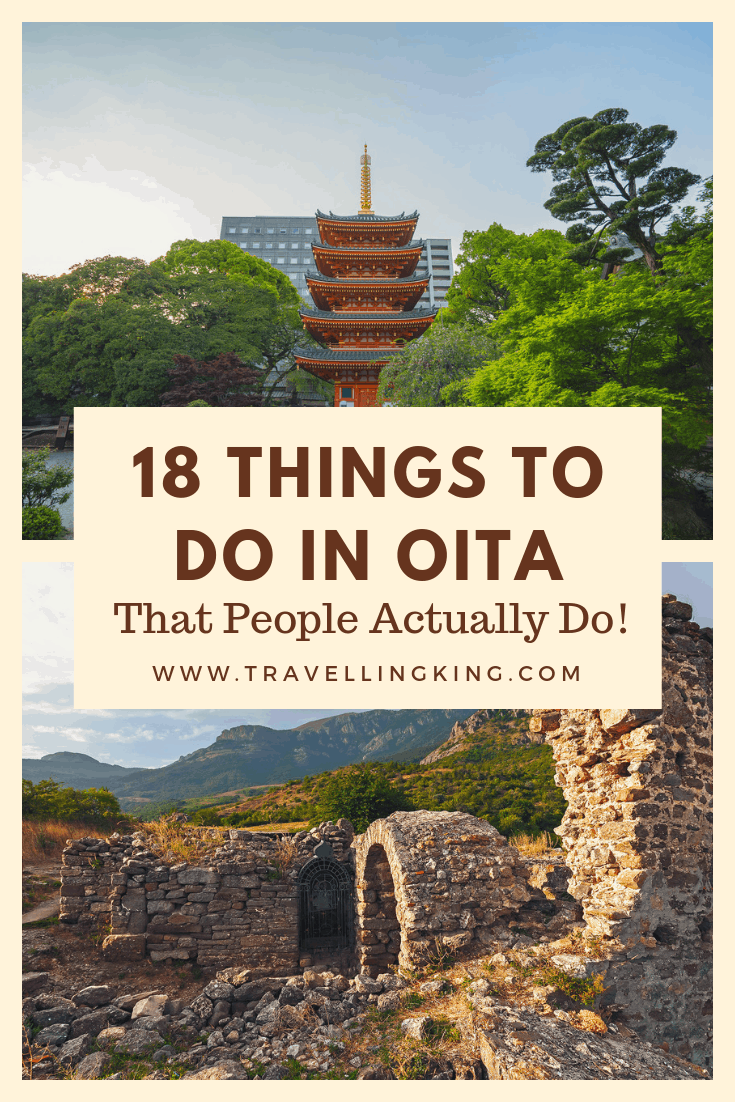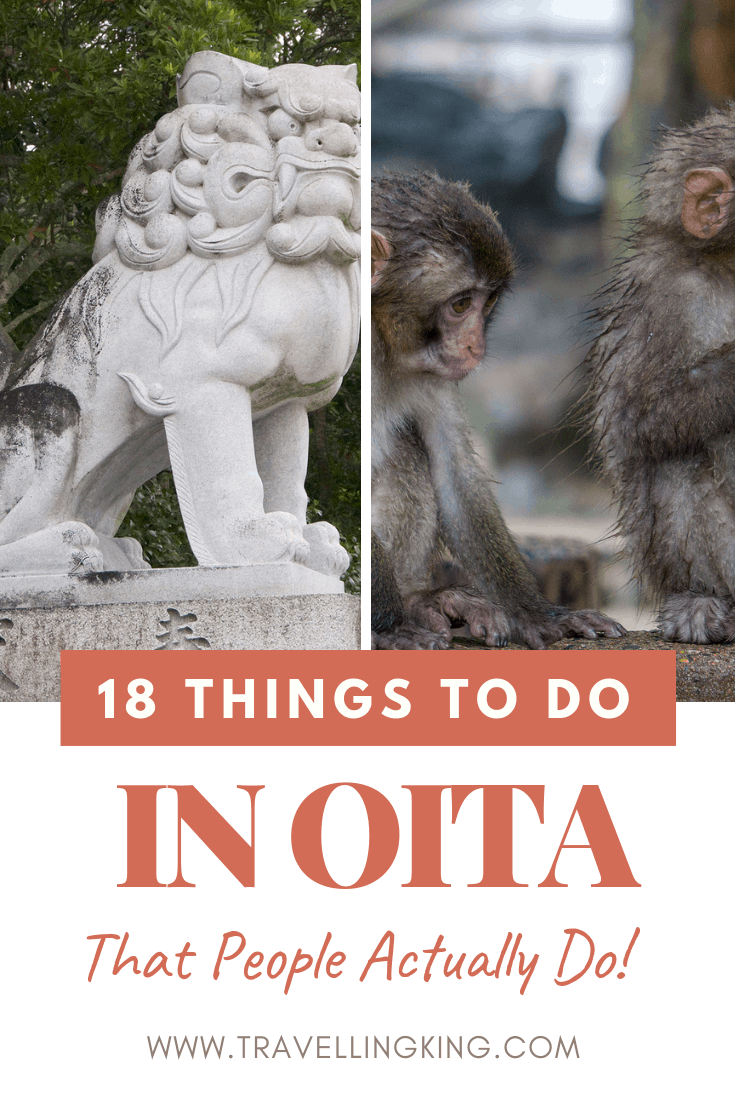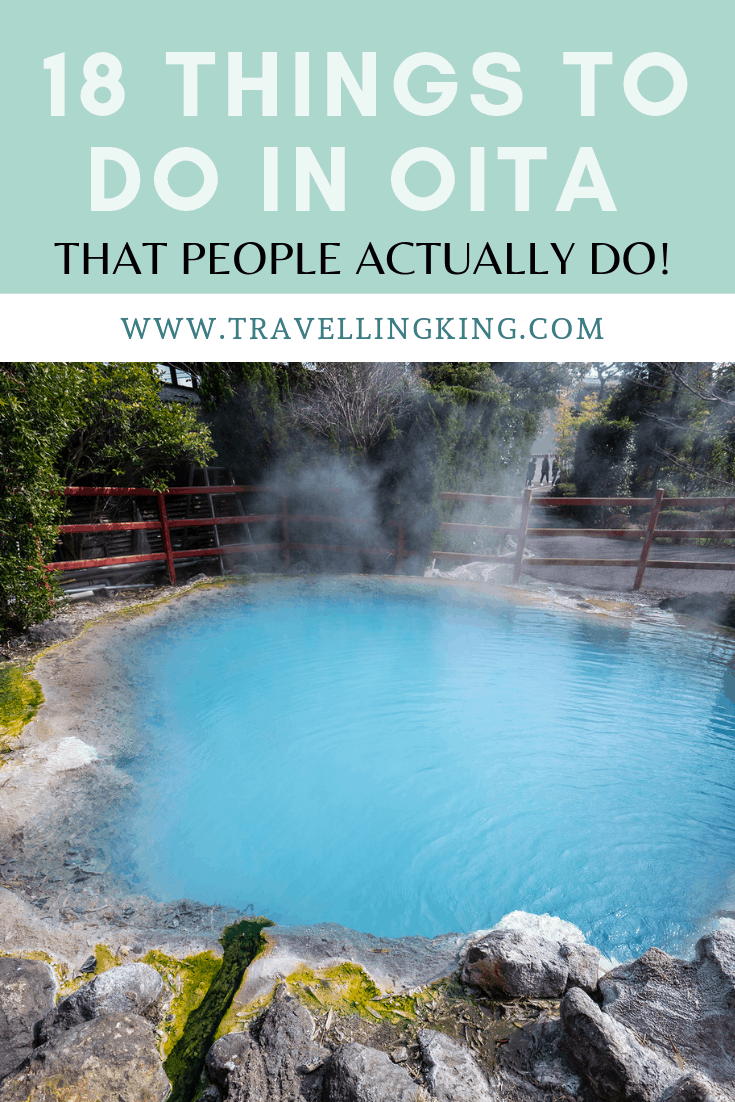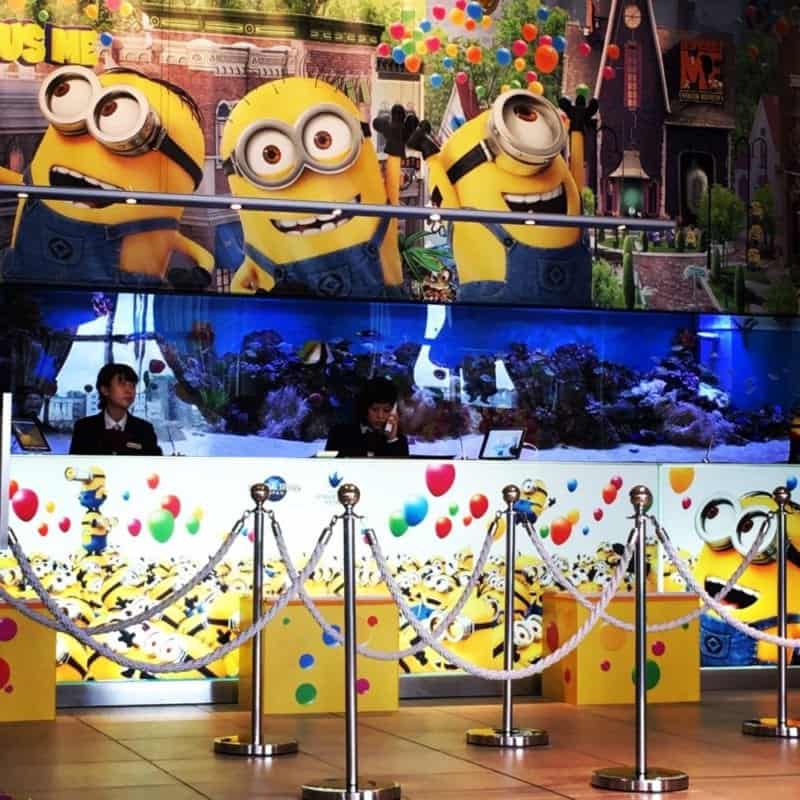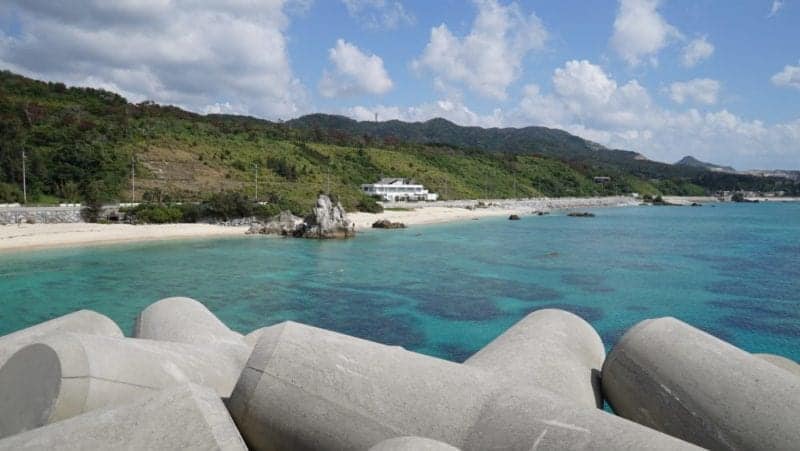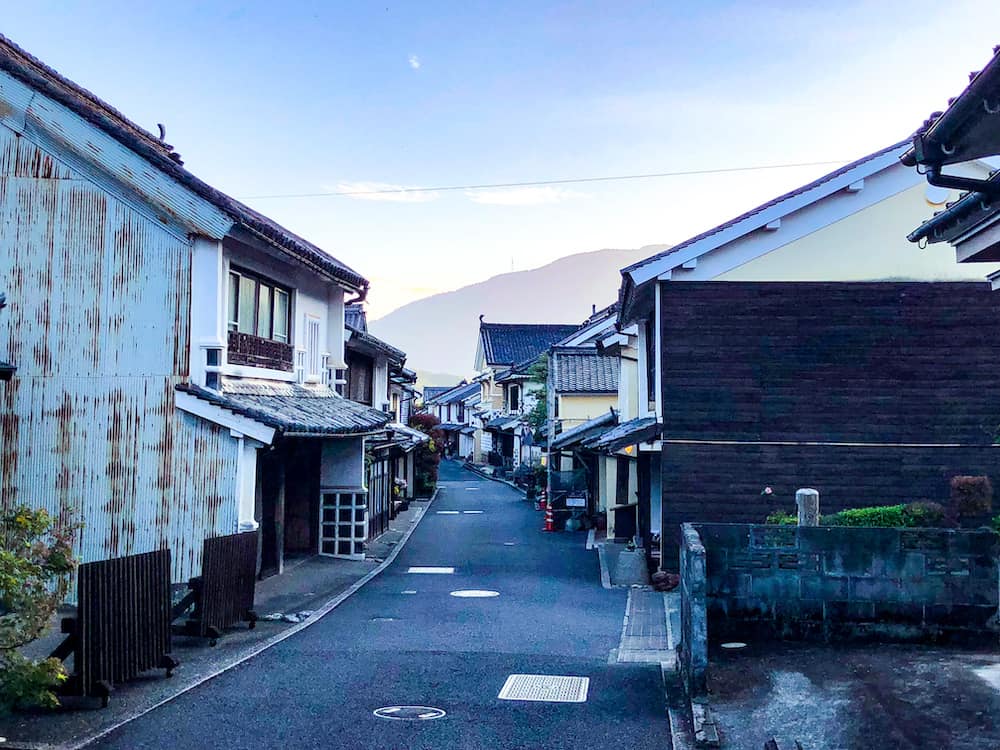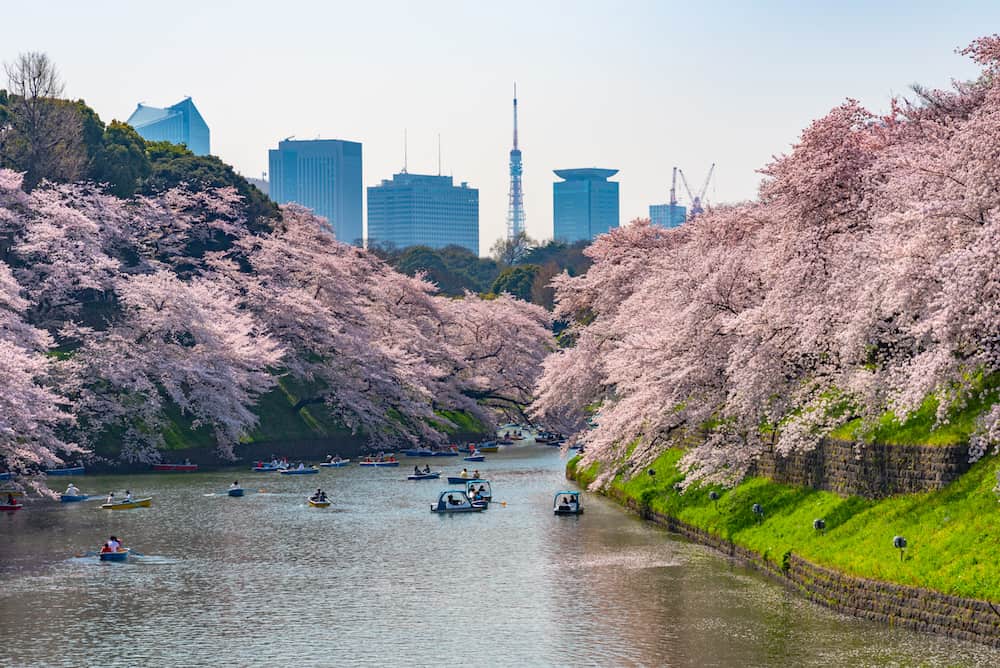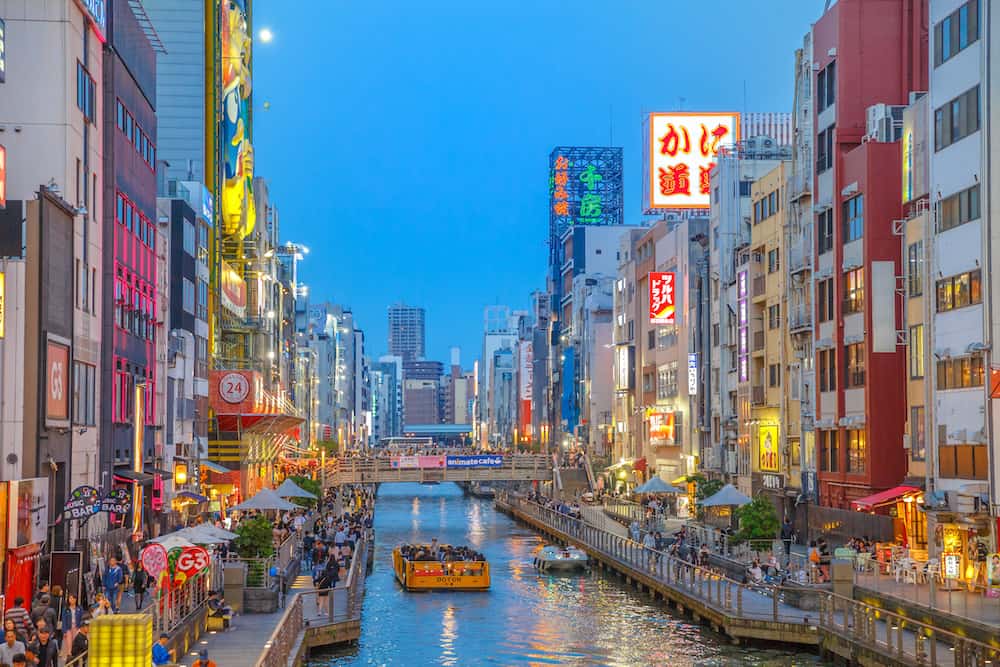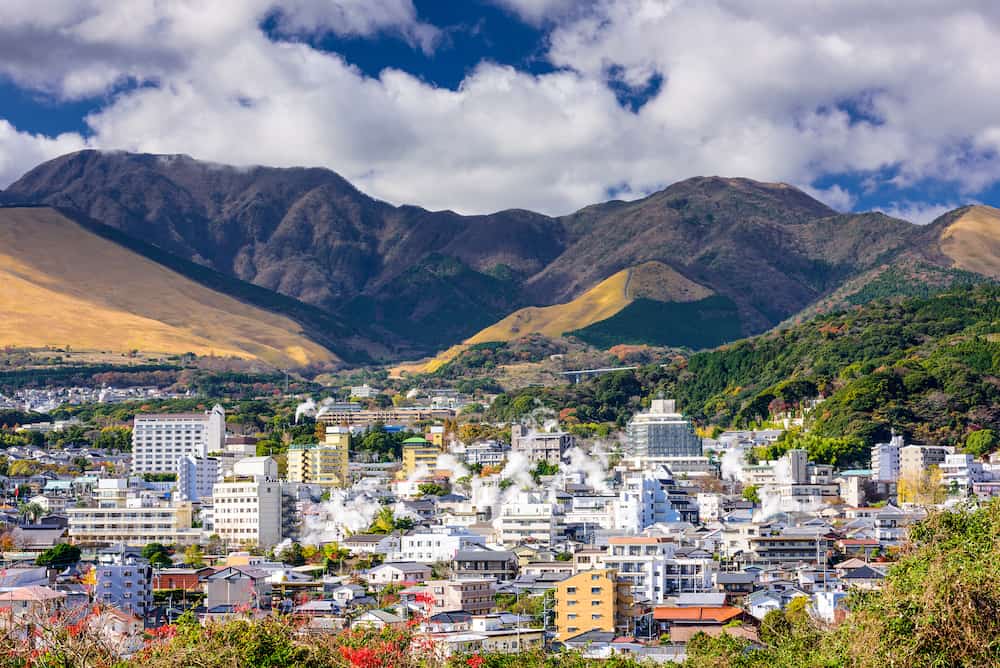18 Things to do in Oita, Japan – That People Actually Do!
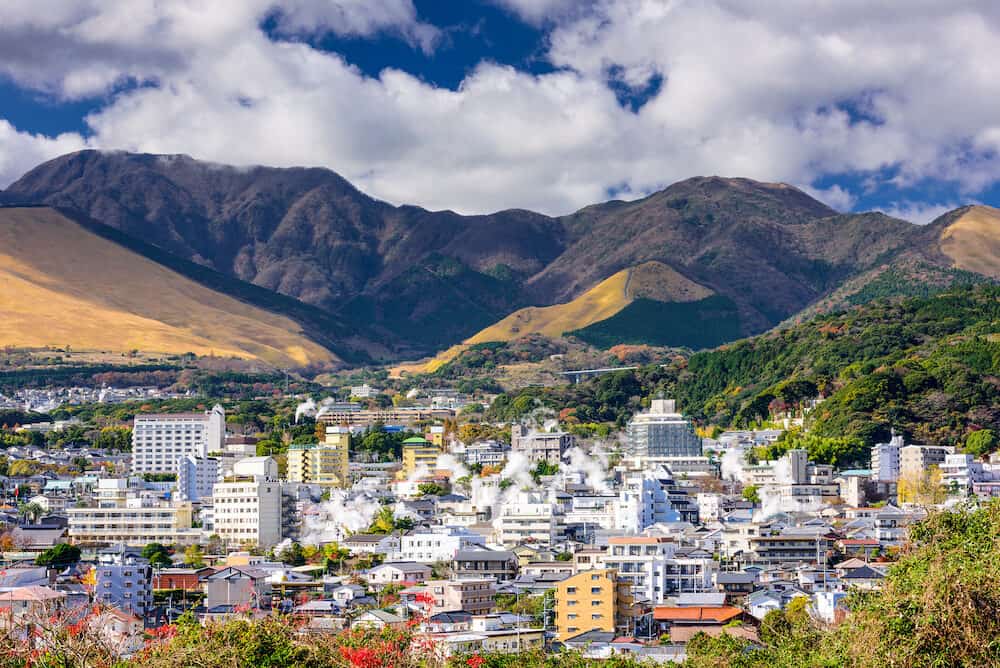
Oita, Japan is both a city and a prefecture located in Kyushu, the southernmost of Japan’s four main islands. Oita is famous for its hot springs, and the area boasts the most amount of onsens in all of Japan.
The laid-back culture draws both national and international visitors, so if you’re looking for a calm place to unwind, Oita is your ideal destination.
Here are 18 suggestions of things to do in the city of Oita, as well as the greater Oita Prefecture.
Plan your trip
Save on fees abroad with the Wise Card—use it at ATMs, restaurants, and for flights or hotels in over 150 countries. Manage 40+ currencies in real-time with the Wise app.
Need Help Planning?
- Cheap Flights: Find the best deals.
- Accommodation: From hostels to luxury stays.
- Car Rental: Affordable options worldwide.
- Sightseeing Tours: Explore without breaking the bank.
- Travel Adapter: One adapter for all your needs.
- Travel Insurance: Don’t risk it—stay covered.
This post includes affiliate links. Read my full disclosure and content policy.
Hyotan Onsen
Japan’s high amount of active volcanoes naturally produce geothermally-heated baths called onsens. Whether indoor or outdoor, private or public, an onsen is the ideal way to feel pampered and relaxed while in Oita.
One of the best onsens around is the Hyotan Onsen in Beppu. Less than half an hour from the centre of Oita is an oasis that has consistently received three Michelin stars.
The onsen has been open for over 90 years and remains just as traditional as it has always been, with bathtubs made using Japanese cypress wood, bamboo and stone.
There are eight public onsens for men and women each, as well as nine different private, family baths to choose from.
You can even have a unique bath where you are buried in sand, which is heated by the steam of the hot springs below. Hyotan Onsen is open every day from nine a.m. until one in the morning, so finding a time to visit shouldn’t be difficult!
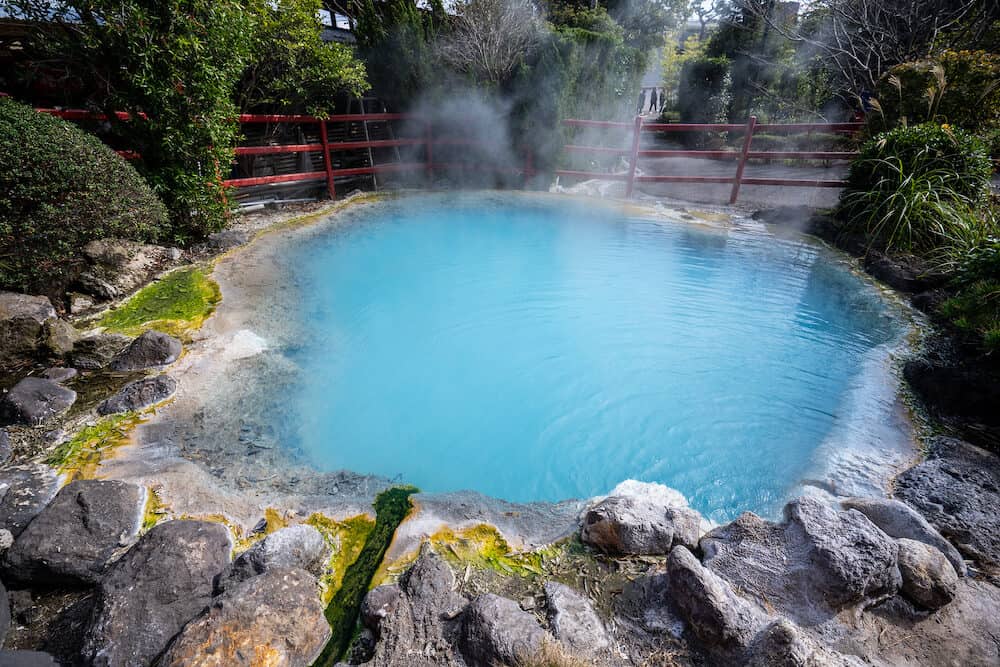
Umitamago Aquarium
Also known as the Oita Marine Palace Aquarium, Umitamago is one of the most stunning aquariums in Japan.
The carefully-designed displays almost make this marine-life park look like an art museum as well. It’s a superb place to go if you’re with children, who will be entertained the entire time.
Dolphins, penguins, seals, otters and various species of fish can all be seen at Umitamago. There are touch pools to get up close to the sea life, and an enormous water tank with fish swimming freely. If you’re catching public transport, it’s a 10-minute bus ride from Beppu Station.
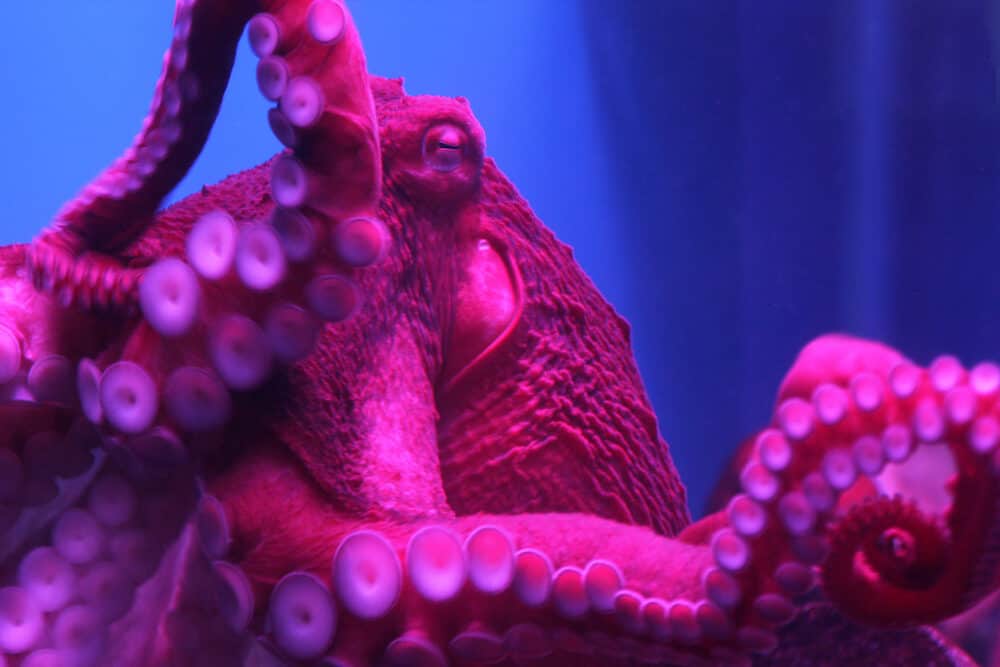
The Monkeys at Takasakiyama Natural Zoological Garden
One of the best things to do in Beppu, just outside of Oita City, is to see the monkeys at Takasakiyama. Conveniently, the Natural Zoological Garden is right next to Umitamago, so you can schedule your visit to see both at once.
The reserve was established in 1952 at the base of Mount Takasaki as a safe haven for the wild Japanese macaques, who have very playful personalities.
The monkeys here are not caged like they would be in a zoo and can roam freely. You’ll be able to see these adorable animals up close in their natural habitat, which means you need to be careful of your belongings! Entrance is 510 yen for adults, and there’s a monorail to the top of the hill if you’re unable to walk up.
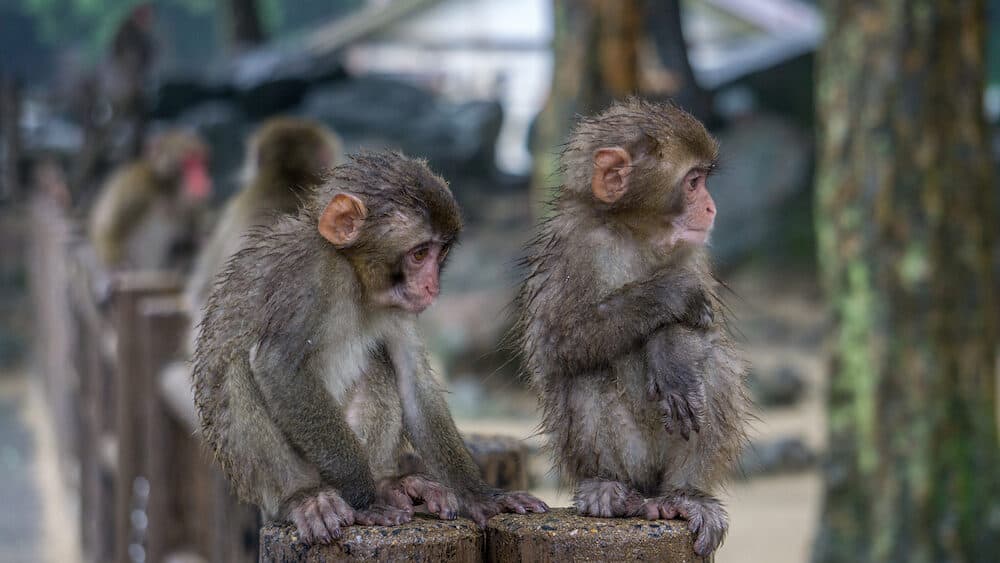
Rakan-ji Temple
The Rakan-ji is one of Oita’s most impressive temples. Built over 700 years ago on the side of the rocky Mount Rakan, this Sōtō temple looks out across the serene Nakatsu wilderness. You can reach the temple easily via chairlift, though walking back down is definitely recommended if you’re able.
A must-see is the group of over 3,700 stone Buddha statues inside the caves. All of the Buddhas have different faces and expressions, ranging from smiling to angry to crying. Also note the abundance of rice paddles attached to the walls, which are inscribed with prayers and wishes.
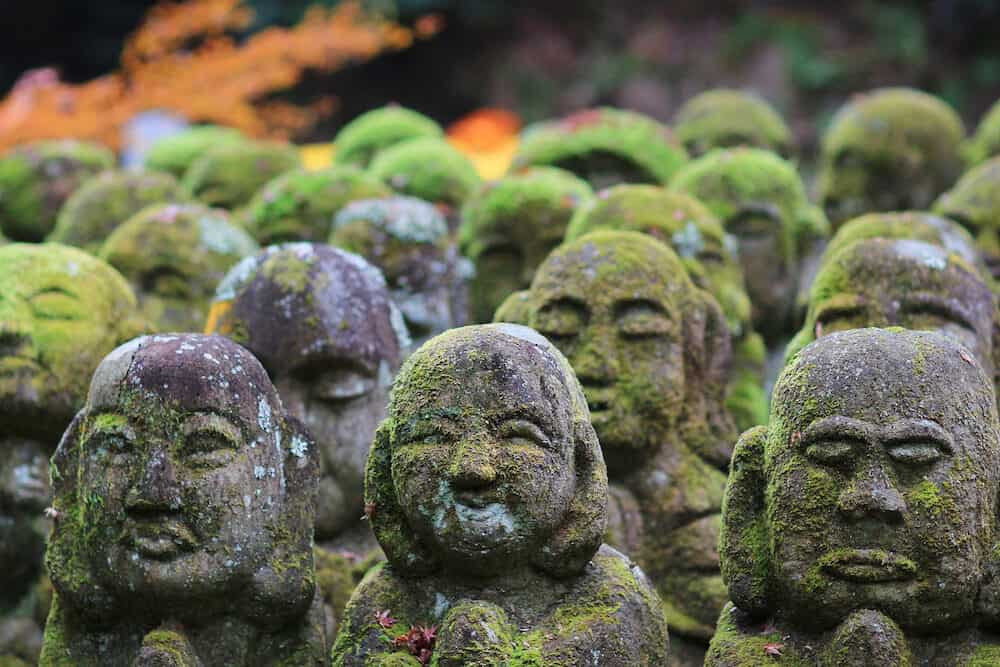
Oita Prefectural Art Museum
Discover the city’s art scene at OpAm, the Oita Prefectural Art Museum. The innovative floor-to-ceiling glass building was designed by Ban Shigeru, a renowned Japanese architect. The museum opened in 2015 to showcase works by local artists.
The atrium contains large art installations alongside a museum gift shop and a small cafe. On the third floor are permanent exhibits with paintings, sketches, sculptures, and ceramic and glass works. It’s free to walk around the first floor, though seeing the collections will cost 300 yen for adults.
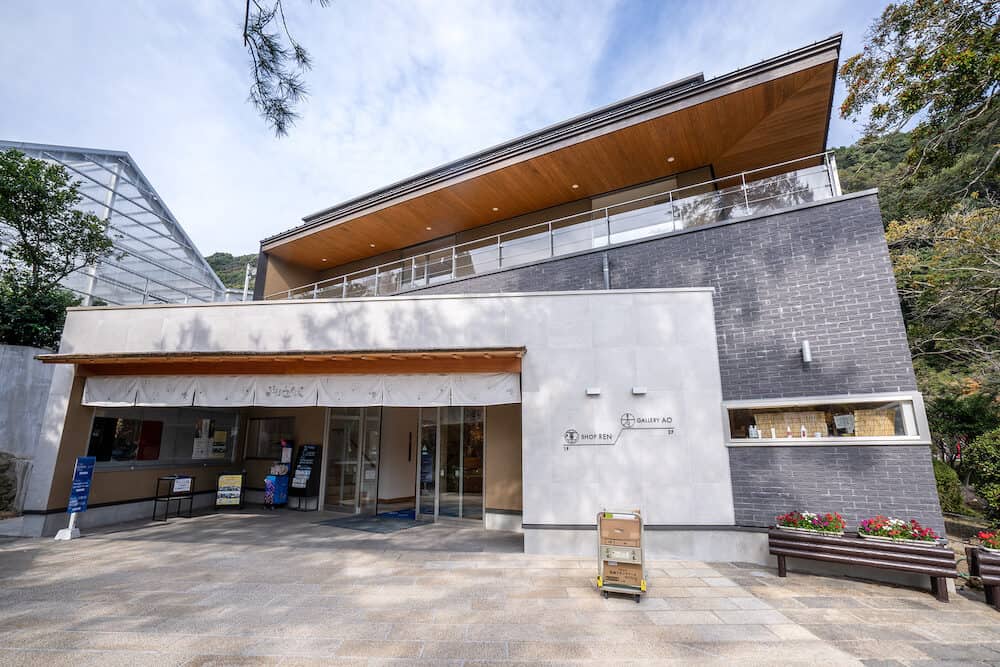
The Hells of Beppu
One of Oita Prefecture’s most fascinating attractions are the Hells of Beppu. It’s worth taking a tour of these eight “hells”, which are actually hot springs and boiling mud pools. Unlike most hot springs in the area, these onsens are definitely not for bathing.
The ominous name comes from the unique colour and composition of each pool. The Chinoike Jigoku, for example, is a deep red, and has become known as the Blood Pool.
There’s also the Oniishi Bozu Jigoku, made up of naturally-occurring circular mud bubbles. The crystal blue Umi Jigoku, on the other hand, is the most pleasant of the hells to look at.
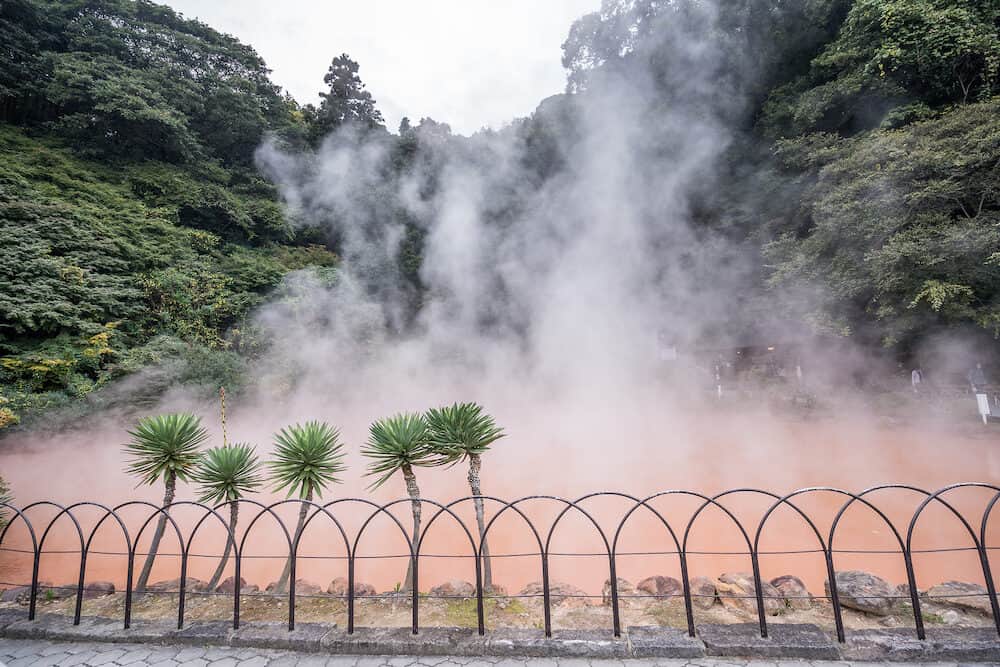
Extra Pampering at the Oita City Spa
The best pampering experience you can have without leaving the city is at the Amu Plaza opposite the Oita JR station. On the 19th to 21st floors of the building, you’ll find the Oita City Spa.
The open-air hot spring bath sits 80-metres-high and looks out across Oita, so you can enjoy beautiful views as you soak your worries away.
There’s also a steam room and an aroma salt spa, and beauty and wellness treatments are available. There are cooler places to relax, have a drink, and even read a book, so you can stay all day if you’d like.
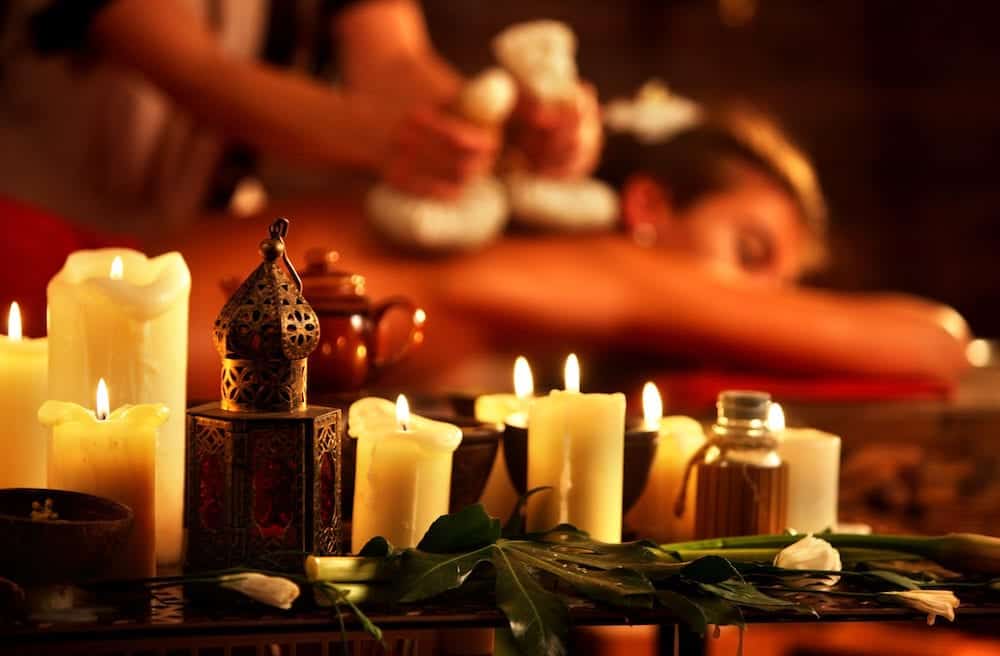
Yusuhara Hachimangu Shrine
This beautiful ninth-century Shinto shrine is a hidden treasure in Oita. Yusuhara Hachimangu is in an ancient forest at the foothills of the mountains, which is why so many tourists don’t know about it.
Drive or catch a bus to the entrance of the forest and pass the 400-year-old Holto tree. As you wander along the path, climb down the stairs, and walk under the vermilion torii gates, you’ll come across the Great South Gate. The current gate dates back to 1870 and has detailed wooden carvings of elephants and komainu lion dogs.
Inside the main compound in front of the altar is Tengu, a large, red, legendary figure in Japanese folklore. Visit if you feel like a relaxed walk in nature while also getting to see some traditional Japanese architecture.
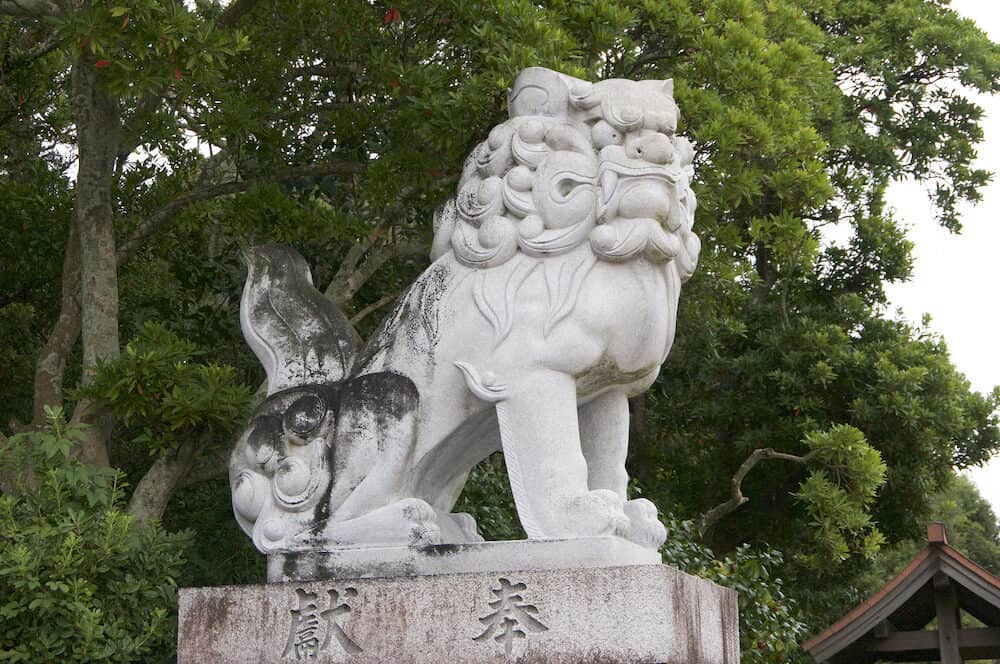
The Art Plaza
Another fascinating art space in central Oita is the Art Plaza. The industrial, concrete building, which looks a tad mysterious from the outside, serves as a community space to hold fairs and exhibitions.
There are also some permanent collections too, so if you’re interested in modern art, this is definitely an interesting place to check out.
Hiking Mount Kuju
If you feel like hiking in Oita, there’s a fantastic mountain range not far from the city. Part of the 100 Famous Japanese Mountains, Mount Kuju reaches 1,791 metres high. The trails here are well-marked and not too difficult for the average person to handle.
The official hike from the Chojabaru rest stop can take seven to eight hours, but the trail beginning at Makinoto Pass will only take around five hours. If you’re hoping to find a spot to park your car, be there before 11 in the morning, as the route is quite popular on weekends.
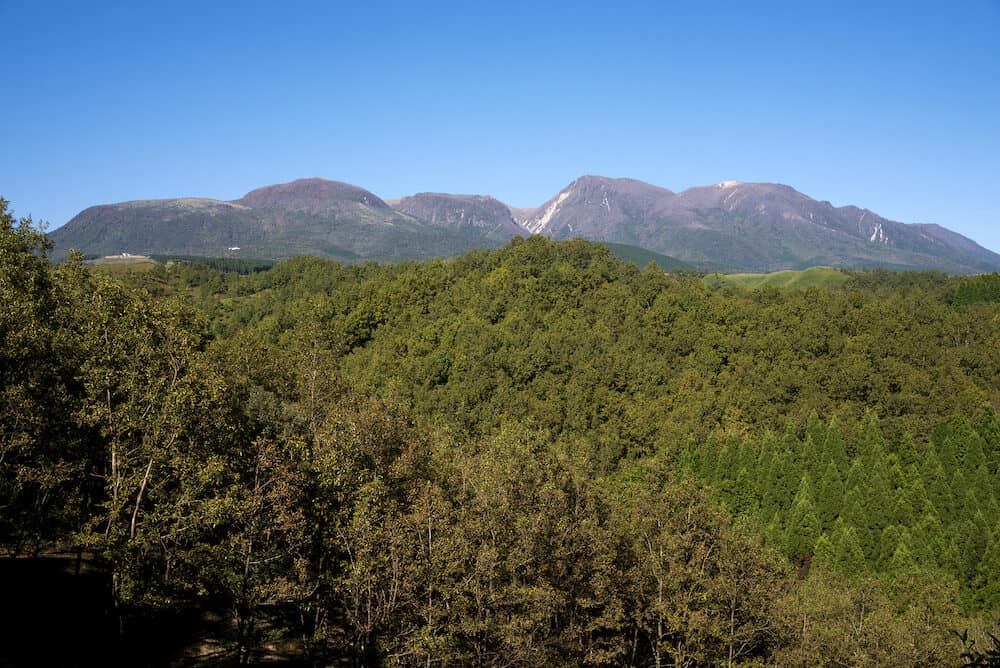
Funai Castle Ruins
One nighttime attraction you won’t want to miss seeing is at Oita’s Funai Castle. The small stone castle here was built in the 16th century and is surrounded by a moat on three sides.
Inside the complex, the framework of a virtual castle is brightly illuminated by white and blue lights from sunset until midnight.
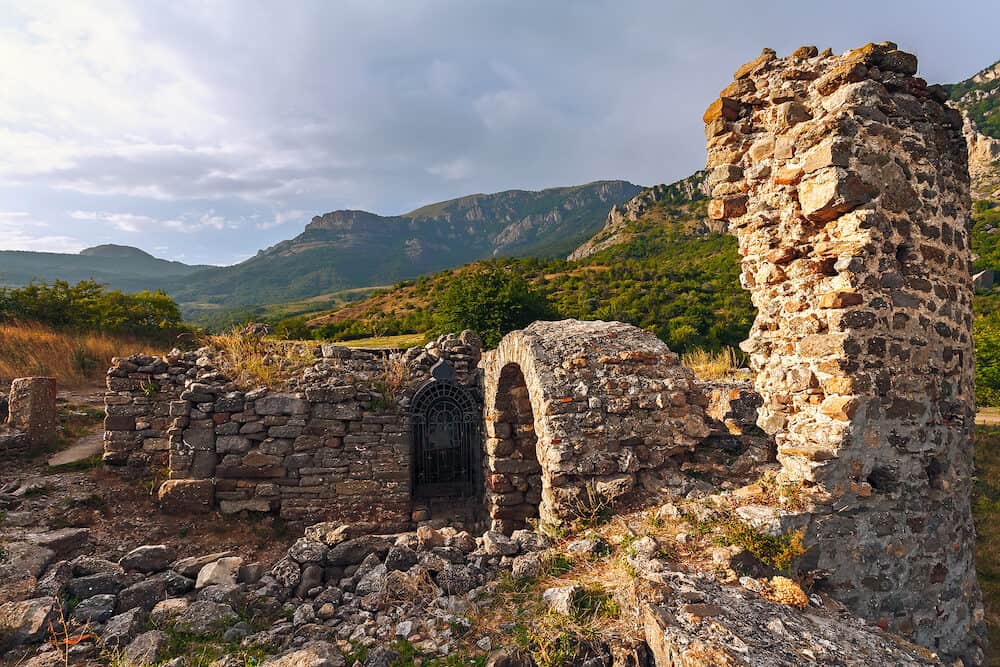
Sano Botanical Garden
If you want to spend the day amongst nature but aren’t up for a big hike, head to Sano Botanical Garden. With over 1,500 kinds of flora, there’s a lot of plants and trees you can discover.
Pack your own picnic lunch to enjoy on the lawn, then peruse the beautiful greenhouse flower garden.
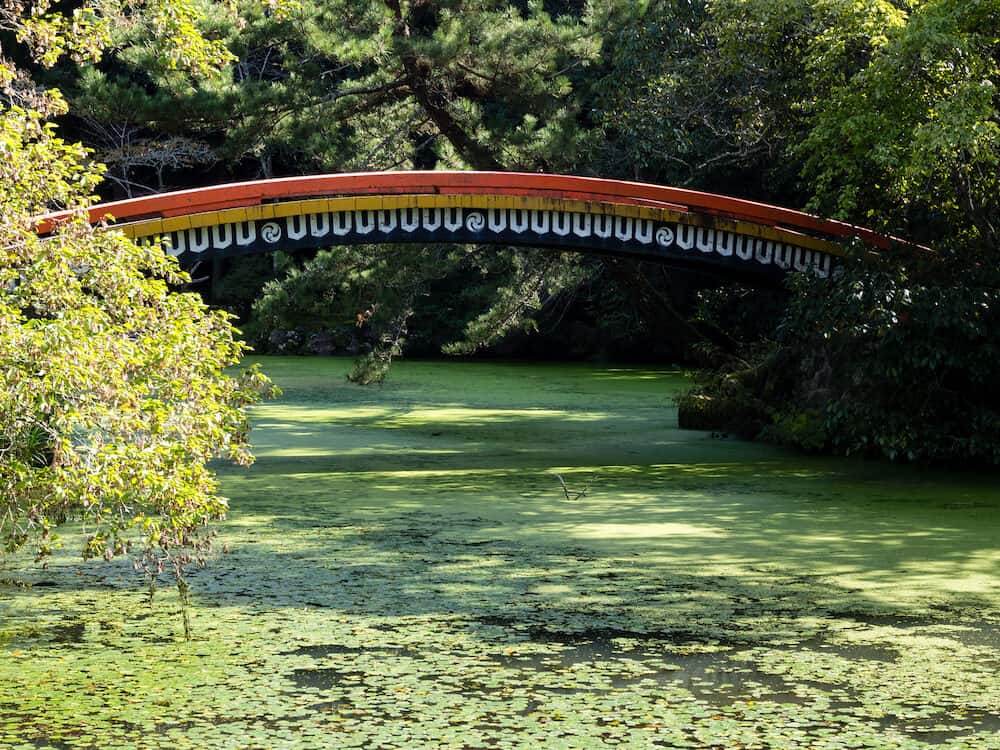
Usa Jingu
The most vibrant shrine in Oita Province is the Usa Jingu (also called the Usa Hachimangu). The red structure was built in the eighth century, though its foundations were laid during the Wado era of 708 to 714 AD.
A large torii gate greets you upon arrival, and artefacts from as far back as the Meiji period are stored in the Treasure Hall.
A festival is regularly held at the shrine where the rite of shinbutsu-shūgō is performed to acknowledge the blending of Buddhist and Shinto beliefs.
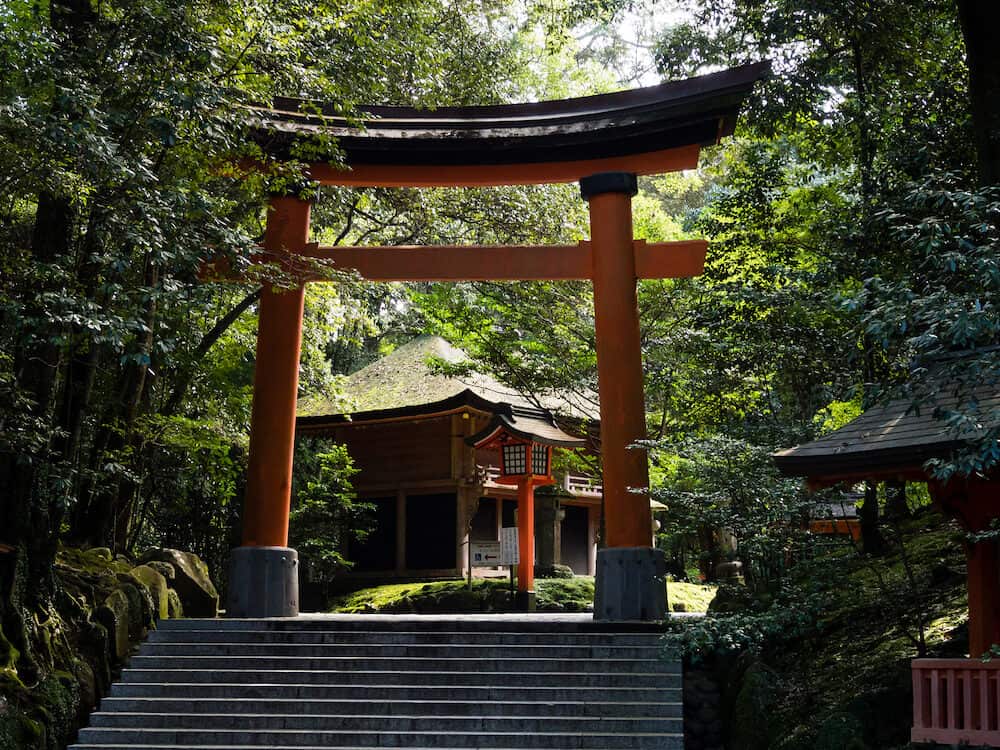
The Blue Tunnel
Aonodomon is a popular attraction in Yabakei, a gorge in Oita Prefecture. A Buddhist monk named Zenkai built the tunnel through the cliff to ensure a safe passage for others. He spent 30 years of his life chiselling and hammering his way through 185 metres of solid rock.
Harajiri Falls
Head to the south of the prefecture to see the peaceful Harajiri Falls, formed 90,000 years ago from an eruption of Mount Aso.
The 120-metre-wide and 20-metre-high cliffs appear in a horseshoe shape, drawing comparisons to Niagara Falls in North America. There’s a sturdy suspension bridge you can cross, and a flight of stairs to take you down towards the water.
Inazumi Underwater Cave
Another must-visit in the south of Oita Prefecture is the Inazumi Underwater Cave. It was formed over 300 million years ago and is the largest underwater cave in Japan.
These unusual limestone caves have some incredible (and creepy) formations, including stalactites and helictites. The water is always around 16 degrees Celsius, meaning there are no seasonal closures over the winter. If you’re up for it, this is one scuba diving experience you won’t forget.
A Day Trip to Fukuoka
A great place to take a day trip from Oita to is Fukuoka. Also both a city and a prefecture, Fukuoka is about two hours west of Oita.
One of the top things to do in Fukuoka is to see the Fukuoka Castle atop Fukusaki Hill. It was constructed during the early 1600s, beginning in the Keicho era yet completed during the Edo period. If you’re visiting during springtime, you’ll be lucky enough to see the cherry blossom trees in bloom all around the castle, extending from Maizuru Park.
To get the full experience, book a private tour of the area. A guided tour can last anywhere from three to eight hours, depending on how much time you have to spare. Ensure you see all of the top sights in style, including the Fukuoka Tower, Canal City, and the Dazaifu Tenmangu Shrine. You can also take a private cooking class in the evening to learn more about (and taste) the local cuisine.
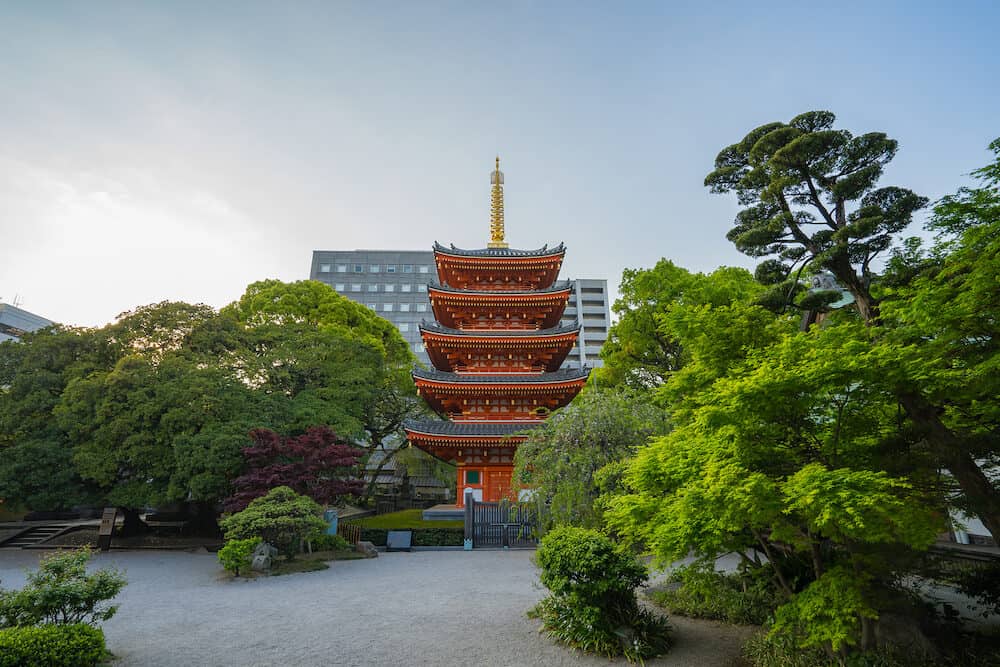
A Day Trip to Kumamoto
There are so many more day trips from Oita you can take, and Kumamoto is another place you should definitely consider visiting. This city has an all-in-one tourist hotspot called Sakuranobaba Johsaien that is perfect for first-time visitors.
There’s a tourism office for last-minute information, an exhibition on the history and culture of Kumamoto, and a group of 23 shops and restaurants to shop and eat all you like.
Nearby is Kumamoto Castle, which has a long and interesting history and has been controlled by multiple clans since its construction in 1467. Unfortunately, an earthquake in 2016 cause severe damage to all structures within the complex.
The reconstruction is expected to last into the late 2030s, though there is a special tour you can take to view the exteriors and renovation efforts.
One of the best things to do in Kumamoto when the weather is nice is to visit the beautiful Suizenji Jojuen. The outdoor garden is landscaped around a pond in traditional Japanse style and has been enjoyed by residents since the 17th century.
The garden contains a small hill modelled after Mount Fuji, as well as many other miniature replicas and a quaint teahouse.
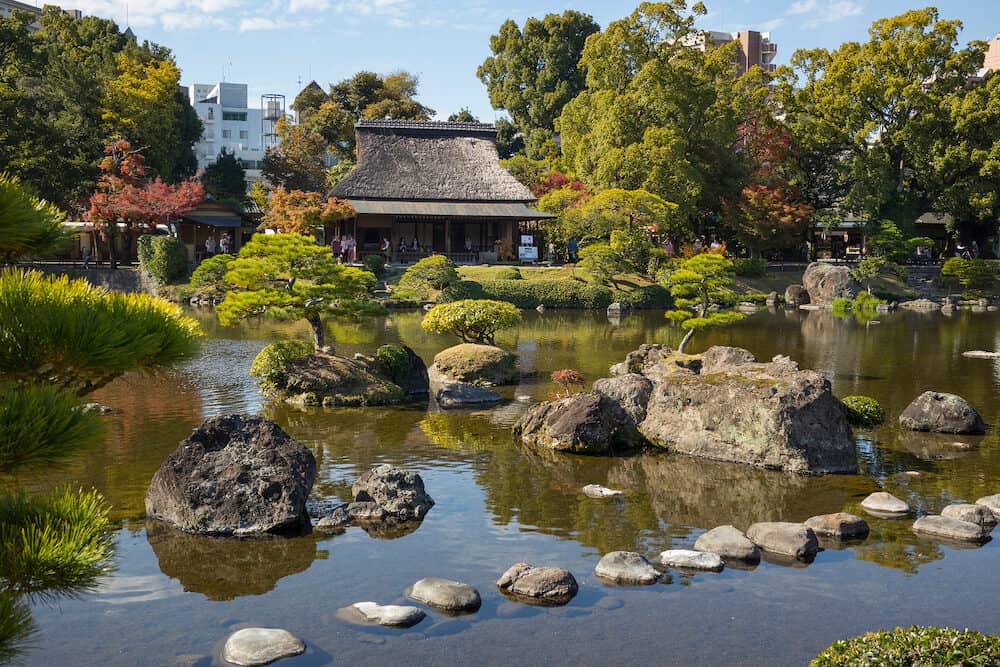
Recommended tours in Oita
If you’d like to save it for later, please save it to Pinterest.
